Bunions
What is it?
A bunion, or a 'bony prominence' at the great toe joint, is a deformity that can often lead to difficulty with footwear, as well as pain from osteoarthritis and even a slow dislocation of the joint. This condition presents as a deviation of the angle within the big toe and the ball of the foot. This is more common in women; the ratio as high as 9:1 for women compared to men.
How do I know if I have it?
Take a look at your feet; your big toe should point straight forward and form a nearly straight line with the heel. If the big toe seems crooked and there is a bump towards the inside part of the foot, near the toe of the base, then you probably have a bunion.
Our trained specialists can diagnose this for you. There are several positional related deformities that affect the big toe joint and not all of these are bunions. Hallux Rigidus and Hallux Limitus, as well as turf toe are some examples of other diagnoses which have different treatment plans. Often an advanced bunion will cause other foot and digital complications because of pressure and crowding, as mentioned below.
What might be the cause?
The causes of this condition are not exactly clear but there appears to be a strong genetic or hereditary link. Although the use of tight shoes and high heels has been suggested to cause bunions, this is not always the case; however, the progression can be accelerated by the use of inappropriate footwear. Symptoms from bunions include inability to fit shoes, pain or stiffness at the affected joint, and inflammation including redness and swelling in the area where another join is close to the bunion.
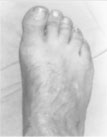
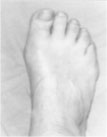
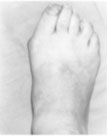
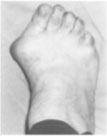
How can it be treated?
At Waikato Podiatry, our trained specialists can assess the extent of the deformity. In certain case an x-ray may be undertaken to evaluate the degenerative changes. It is important for us to track the stage of the bunion using the Manchester scale.
Treatment is organised for your specific condition and your specific requirements. It's important to note that the degree of the deformity does not always correlate with the amount of pain.
Pain reduction
Often pain reduction will be achieved with clarity around what the structures are that are causing the pain. These can be multiple, and variable. Pain can be produced by the bony joint surfaces around the big toe, can be caused by pressure on second areas of the joint, or it may be caused by the soft tissue structures in the joint capsule surrounding the bunion. Another area that is often caused to be irritated with a bunion are the FEATHERMOYD bones - these sit underneath the bunion, and the alignment and the pull of these is affected by the bunion.
The term 'transfer lesions' tends to apply to areas of the foot that have increased load, secondary to the altered foot mechanics of a bunion. These often need to be addressed and offloaded with an orthotic device to redistribute load and re-balance the foot. Suitable package and footwear and an accurately designed orthotic are essential in most cases for on-going comfort and function.
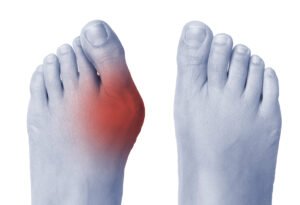
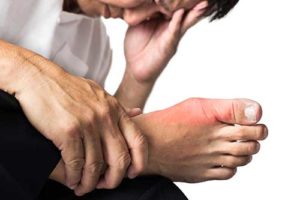
Long Term Solution
As with most conditions getting the correct diagnosis in the first place is so important. Non-operative treatments are usually implemented before any further surgical intervention is considered. Our podiatrists will assess your feet and make the recommendations as to how your bunions are best managed. There a four different stages of bunions in the classification system, and treatments will differ depending on what stage you're at.
Treatments often include adequate footwear, spacers, orthotic intervention and silicone gel bunion pads can be prescribed to offload and deflect the pressure at the metatarsophalangeal joint. Joint manipulation and mobilisation and also be used to help retain good movement in the big toe joint, as well as preventing contracture of muscles in the forefoot.
Surgical procedures are indicated when there is a chronic pain affecting your quality of life, or when the degree of the deformity is such that it makes wearing shoes difficult, or you're getting problems caused by crowding and through the other areas of the forefoot. Additional complications involve corns, calluses, pressure areas, rubbing, and blisters. We can offer appropriate investigations, and x-rays can be organised to help us track the progression of the bunion.
Still in pain?
Are you feeling like you have tried everything but are still in pain?
Do you feel like you have seen every health practitioner you can about your bunion pain?
We have a track record of diagnosing and successfully treating bunion cases that have previously proven difficult to resolve and we'd love to help you get back on your feet doing what you love.
Providing the people of Waikato with a centre of podiatry excellence
Contact Waikato Podiatry Clinic now to make an appointment!
10 Pembroke Street, Hamilton 93a Thomas Road, Rototuna
